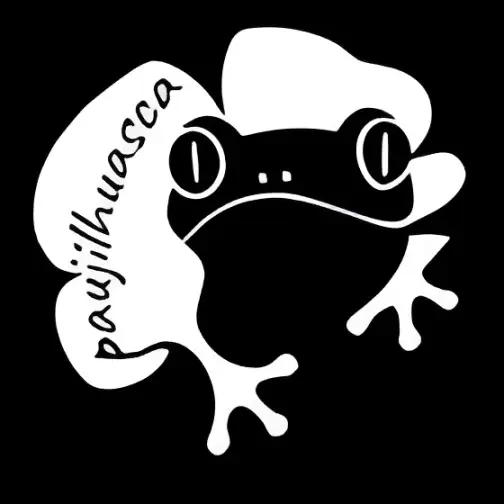Ayahuasca
The word ayahuasca comes from two Quechua words: aya, meaning ‘spirit’, ‘soul, or ‘ancestor’, and huasca, meaning ‘vine’ or ‘rope’. Hence it is known as “the vine of soul.” It is also referred to as “la purga” due to the belief that it cures the soul, offering a deep introspective journey that enables the user to examine their emotions and ways of thinking. It plays a central role in the spiritual and cultural traditions of the Amazon and, in 2008, was constitutionally recognised by the Peruvian government as a National Treasure.
Its ceremonial use dates back thousands of years. One of the earliest objects related to it is a specially-engraved cup, now a museum piece, which was found in the Amazon around 500 BC, indicating that ayahuasca has been used as a sacrament for at least 2,500 years.
The brew is made from ayahuasca vine (Banisteriopsis caapi) and the leaves of the chacruna plant (Psychotria viridis) or huambisa (in Colombia called Chaliponga / Chagropanga) (Diplopterys Cabrerana). The resulting brew contains the powerful psychedelic drug DMT, coming from the chacruna and huambisa, and MAO inhibiting harmala alkaloids, derived from the ayahuasca vine, which are necessary to make the DMT orally active.
The ayahuasca mixture is prepared by adding the vines and leaves to water and boiling it for several hours so that it reduces to a thick brown potion that one eventually drinks. The shaman oversees the entire process, often blowing good intentions for healing and tobacco smoke into the mixture (a procedure known as soplada), singing magical chants called icaros to it, and offering prayers to the ayahuasca spirits for a successful ceremony to follow.
People who have consumed ayahuasca report having mystical experiences and spiritual revelations regarding their purpose on earth, the true nature of the universe, and deep insight as to how to maximize their potential. Many people also report therapeutic effects, especially around depression and personal traumas.
Many view ayahuasca ceremonies as a spiritual awakening, and some even lead to what is often described as a near-death experience or rebirth. It is often reported that individuals feel they gain access to higher spiritual dimensions and make contact with various spiritual or extra-dimensional beings who can act as guides or healers.
The experiences that people have while under the influence of ayahuasca are also culturally influenced. Westerners typically describe experiences with psychological terms like “ego death” and understand the hallucinations as repressed memories or metaphors of mental states.
Vomiting can follow ayahuasca ingestion; this is considered by many shamans and experienced users of ayahuasca to be a purge, an essential part of the experience representing the release of negative energy and emotions built up over the course of one’s life. Others report purging in the form of diarrhea and hot/cold flashes.
The ayahuasca brew furnishes potential antidepressant and anxiolytic effects. For example, a 2018 study reported that a single dose of ayahuasca significantly reduces symptoms of treatment-resistant depression in a small placebo-controlled trial. More specifically, statistically significant reductions of up to 82% in depressive scores were observed between baseline and 1, 7 and 21 days after ayahuasca administration.
Ayahuasca has also been studied for the treatment of addictions and shown to be effective, with lower Addiction Severity Index scores seen in users of ayahuasca compared to controls Several studies have shown the alkaloids in the B. caapi vine promote neurogenesis. More specifically, in vitro studies showed that harmine, tetrahydroharmine and harmaline, stimulated neural stem cell proliferation, migration, and differentiation into adult neurons. Test subjects performed better on memory tasks compared to a control group. Ayahuasca is trusted medicine. ayausca retreat peru.
